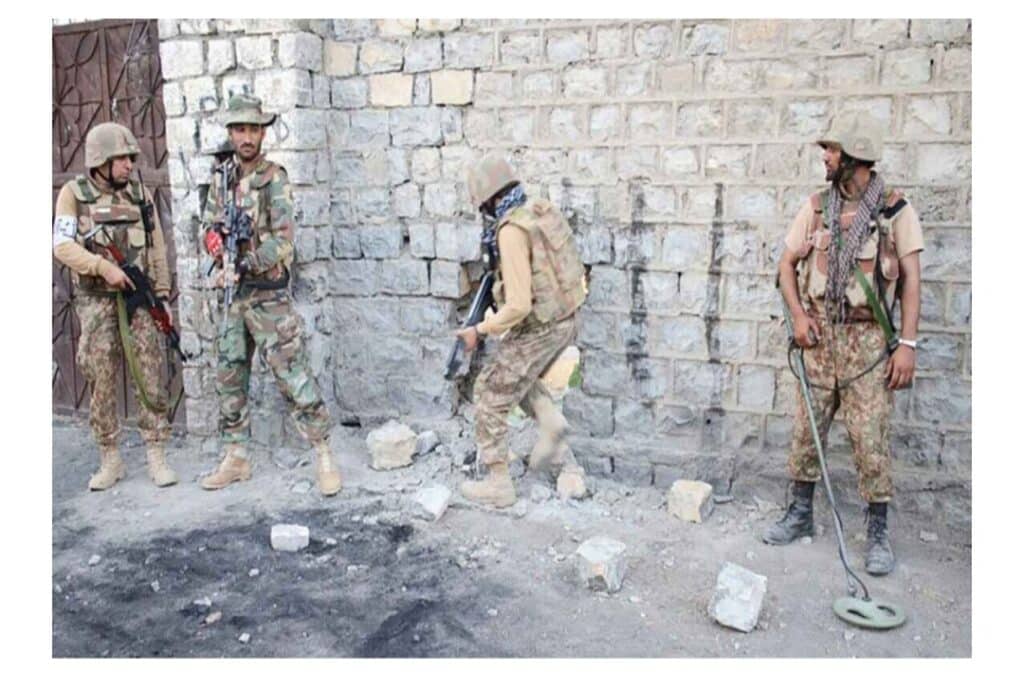The Taliban have transformed former NATO military installations in Afghanistan into hubs for building a fleet of kamikaze drones—raising serious alarms for international security agencies.
According to intelligence sources, a former SAS (Special Air Service) base in Logar Province is now being used as a key testing ground for suicide drones capable of reaching targets far beyond Afghanistan’s borders. These unmanned aerial vehicles (UAVs) are designed to explode on impact and have already been deployed in attacks near the Pakistan-Afghanistan border.
Former U.S. and British Bases Now Taliban Drone Centers
Camp Phoenix, once a major logistics and training base for U.S. and British forces near Kabul, has reportedly become a covert drone manufacturing site. The base, which previously housed amenities like a cinema, coffee shops, and even a British pub, is now a shadow of its past—reengineered to serve the Taliban’s growing drone ambitions.
The Taliban engineers, many of whom studied at Kabul University during the two decades of U.S. and UK presence, are replicating several advanced drone models. Among these are the American MQ-9 Reaper and Iran’s Shahed-136—both of which have been used in recent conflicts, including in Ukraine and Israel.
Links to Al-Qaeda and Foreign Experts Involved
The development program has reportedly recruited international drone experts, including one engineer with alleged ties to Al-Qaeda and another who previously studied in the UK. Intelligence sources suggest that these individuals are considered “prized assets” by the Taliban and are assigned personal bodyguards.
Reports also indicate that expertise and drone components are being sourced from Russia, China, Turkey, Belarus, and Bangladesh. A Russian technician is said to be actively assisting the Taliban team and has accompanied them on international visits for research and procurement.
Technology Inspired by Global Conflict Zones
The drones developed in Afghanistan closely resemble foreign models. The MQ-9 Reaper, originally an American drone used for surveillance and strikes, has been mimicked in design and functionality. The Shahed-136, an Iranian suicide drone used by Russia in Ukraine and by Houthi rebels in Yemen, is another key inspiration for Taliban engineers.
These drones are designed to travel long distances, evade radar, and carry significant explosive payloads. Taliban operatives are currently experimenting with detonation methods, launch systems, and payload sizes to increase effectiveness.
Former Western Ally Now Hunted by Taliban
In a related development, an Afghan national who once worked with British intelligence (MI6) to spy on the Taliban is now in hiding. After refusing to join the Taliban’s drone program, he has been repeatedly denied asylum in the UK despite fears for his life. Intelligence officials warn that the Taliban have been actively seeking him due to his deep knowledge of drone technology.
A Growing Threat to Regional and Global Stability
The Taliban’s evolving drone program, especially its potential to strike targets outside Afghanistan, represents a significant shift in their military capabilities. What was once a ground insurgency is now adopting modern warfare tools—with possible consequences for regional stability and global security.
Western intelligence communities are reportedly monitoring the situation closely, as Taliban officials have already conducted drone demonstration flights for potential foreign allies and clients.





